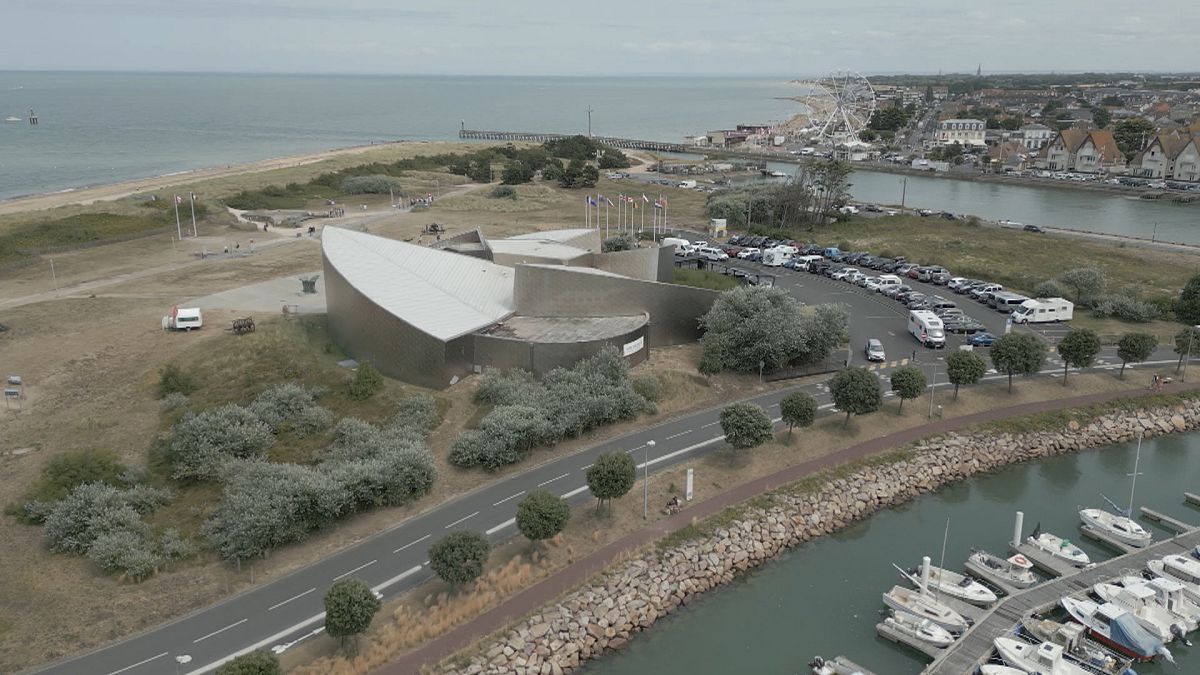D-Day centre combines eco-tourism with commemoration

The Juno Beach Centre in northern France honours thousands of British and Canadian soldiers while offering visitors an eco-friendly and immersive experience.
At Juno Beach in Normandy, France, the Allied landings can be discovered and relived in a museum that promotes sustainable development. Coinciding with the 80th anniversary of the landings, the Juno Beach Centre is adapting to the concerns of our time. The museum is committed to reducing its carbon footprint, promoting the circular economy and preserving biodiversity. This European project has enabled the centre to reduce its CO2 emissions by around 14%, between 2019 and 2023, according to Maxime Bouché, the centre’s deputy director: “In 2019, we were at around 1,100 tonnes of CO2 equivalent emitted by the Juno Beach Centre’s activities, and in 2023 we were at around 950-960 tonnes of CO2 equivalent,“ he says.
Hallowed ground
Juno Beach was the codename given to this Normandy beach by the Allied Command. It was here that 21,000 soldiers -14,000 Canadians and around 7,000 British – landed during the Second World War. More than 5,000 of them died in the bloody battle to secure a foothold on this stretch of the northern French coastline.
Today you don’t a car to get to the museum. Access via a cycle path allows the visitor to respect the landscape, aswell as the memory of those who died trying to liberate it. The Juno Beach Centre carried out a carbon assessment which showed that 80% of CO2 emissions were linked to visitor transport. As part of this sustainable development project, in 2021 the museum became the first in France to offer a ‘low carbon’ fare, as . Maxime Bouché explains: “It’s a discount of around 30 – 33% on admission to the museum on presentation of a train ticket for those coming by train to Normandy, a bus ticket for those coming by bus and a photo of the bicycle parked in the centre’s car park at the museum reception desk for the bicycle section,” he says.
Immersive and inclusive experience
During this immersive experience of history, visitors may not be aware of the changes. These include water management, temperature control according to the number of visitors, and lighting, with 440 LEDs installed. Nathalie Worthington, Director of the Juno Beach Centre says digital technology is also a key player among the wide range of initiatives to save and manage resources.
“Where before we would have had to spend huge sums of money, digital technology now makes content accessible to people with disabilities. For example, the films on the tour have all been translated into audio or audio tape, so that people with hearing or visual impairments can discover the tour.”
The ecological and digital transition of the Juno Beach Centre, estimated to cost more than 600,000 euros, was entirely financed by the React-EU programme. The project benefited from the European Regional Development Fund (ERDF) as part of the ‘Support for the ecological and digital transition of tourism stakeholders’ scheme (ERDF REACT-EU) to boost recovery following the Covid-19 pandemic. Nearly 100,000 visitors come to the museum every year, many are Canadians like 15 year-old Romeo: “I’ve just learned about Juno Beach completely. I had never even heard of it before. I thought we were just going to the beach. I feel like it’s really important to have a memorial and like a space where we can recognize what happened in the past, where everyone can come together and really have like, a respectful moment.” Romeo says.
Click on the video to watch the episode in full.
Source: Euro News














